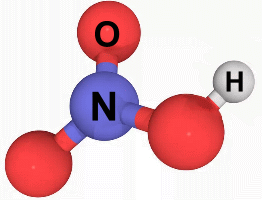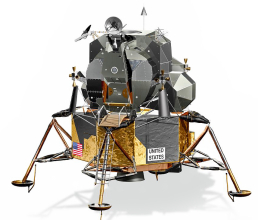  Nitric acid HNO3 is a strong oxidizing acid that can attack almost any metal, and so is a highly corrosive acid. It is toxic and can cause severe burns. While colourless in pure form, nitric acid yellows over time as it decomposes into nitrogen oxides and water.
Nitric acid has a pH of 3.01, and is considered to be a strong acid. Like many acids, it can be neutralized by sodium bicarbonate.
Nitric acid HNO3 is a strong oxidizing acid that can attack almost any metal, and so is a highly corrosive acid. It is toxic and can cause severe burns. While colourless in pure form, nitric acid yellows over time as it decomposes into nitrogen oxides and water.
Nitric acid has a pH of 3.01, and is considered to be a strong acid. Like many acids, it can be neutralized by sodium bicarbonate.The primary use of nitric acid is for the production of ammonium nitrate (NH4NO3) for fertilizers. Nitric acid is used in many other industrial processes, including the production of explosives like TNT, and dyes. It's used as an oxidant in nylon production, as an oxidizer in rocket fuel, and as an analytical reagent.   Nitric acid is an oxygen-rich substance that can be used (as an alternative to liquid oxygen) to provide oxygen for the burning process in rocket fuel. It's often used with other fuels to create hypergolic propellants. Hypergolic fuels are liquids that ignite spontaneously when they come into contact with each other.
Nitric acid is an oxygen-rich substance that can be used (as an alternative to liquid oxygen) to provide oxygen for the burning process in rocket fuel. It's often used with other fuels to create hypergolic propellants. Hypergolic fuels are liquids that ignite spontaneously when they come into contact with each other. Hypergolic propellants are extremely toxic, and require substantial protective equipment for operators. For example, during the Apollo-Soyuz mission, astronauts were exposed to toxic fumes from the maneuvering thrusters, which caused one astronaut to lose consciousness. Many rockets have used nitric acid as an oxidizer, including: |